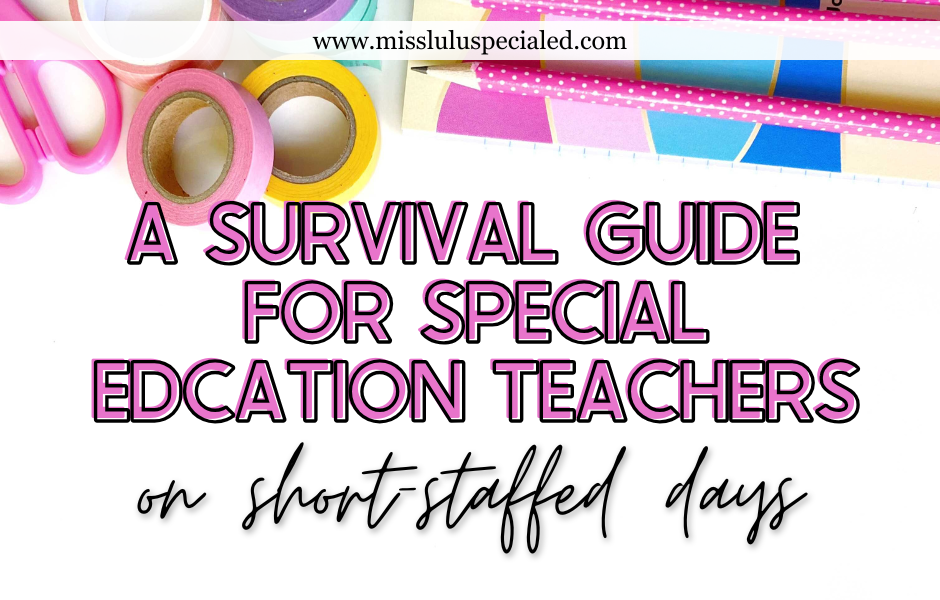PREPARING FOR SCHOOL TO SCHOOL TRANSITIONS TIPS FOR SPED TEACHERS
- Laura Hackwell

- Apr 12, 2021
- 3 min read
Updated: Sep 29, 2024
The end of the year is upon us. The kids are feeling it, and I'm sure you are too! This is a busy time of year with testing, school activities, and paperwork! In the middle of all the chaos, it's essential to start thinking about your students transitioning to a new school next year and the students coming to you! Today, I'm sharing two quick tips for a smooth transition for both you and your students.

Observe the student in their current setting.
I know the end of the year is such a busy time, but it's also a great time to set up observations for your incoming students. Observations are a great way to see students in action and get to know them before next year. At this point in the school year (April or May), classroom procedures and routines are memorized, and you can get great insight into the student's level of independence and potential. We've all had those students who try to play it up and act like they can't do things at the beginning of the year. But if you have been out and observed them in action, you already know what they are capable of and can avoid playing into the learned helplessness.
Here are some things I watch for during observations-
How long is the student on task and working continuously?
You will want to ensure that breaks are built in at appropriate times, especially at the beginning of the year. Knowing how long the student can remain on task will help you determine appropriate break times and avoid student frustration.
What behavioral strategies are being used?
Is there an individual behavior plan in place in addition to the classroom management system? What behaviors are being targeted? It's always helpful to know ahead of time what to expect, but keep in mind that students can change a lot over the summer and when going up a grade level & school. Make sure that you don't let current behaviors define the student.
What are the student's preferred reinforcers?
What people and things do they navigate towards in the classroom? How often is the student accessing reinforcement?
What visuals does the student need?
Is the student using a visual schedule or a token board? Are there visuals for transitions or following directions? You will want these in place from day 1 and will want to either ask the teacher to send them to you or make your own.
What curriculum is the student using and what lessons are they on?
It's helpful to know how the current teacher is teaching and addressing IEP goals. We want to minimize regression, so using the same teaching strategies and curriculum is important when transitioning to a new school.
What do transitions between activities look like?
This is often an antecedent to problem behavior, so watch carefully to see how well the student transitions, especially from preferred to non-preferred activities.
Set up a transition meeting.
I recommend holding a transition meeting with the current IEP team and the incoming IEP team. During this meeting, you can discuss goals, progress, and any other important information that needs to be shared. Some districts require these meetings, and some do not. Even if you don't meet with the parents, I highly recommend meeting with the student's current teacher at a minimum. It's a great chance to ask questions and learn a few tips and tricks from their experience working with the student. We often spend a lot of years with a student and for a cohesive and consistent program that builds on itself from year to year, it's important to learn what's been done, what's being done and where the teacher recommends going next.
I suggest holding transition meetings at the school the student will be transitioning to, and I encourage the student to attend when possible. This will give them a chance to meet you and see their new school and classroom.
A transition meeting can be much shorter than an IEP meeting. Briefly discuss IEP goals and services. If possible, provide copies of the current IEP. Speak to the student's parents or guardians about the student's strengths and weaknesses and the family's short—and long-term goals.

Make sure to take detailed notes about incoming students. I also provide a completed transition information form to new teachers for students exiting my classroom.
These two tips help me end the school year feeling more confident that I can handle what's coming at me next year! They also help your incoming students feel more confident in their upcoming transition. Transitions are scary, but you can make them way less scary just by taking a couple of hours at the end of the year!











Comments